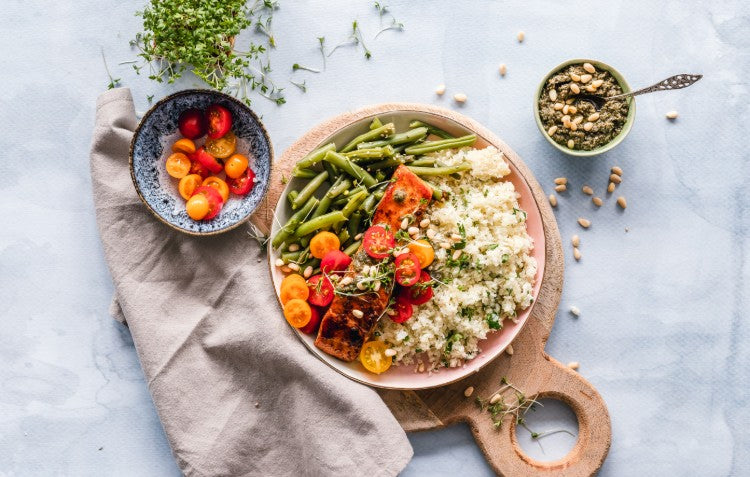Workouts don’t always have to be done in a gym. If you're lacking the time, money, inspiration or are embarrassed to train in a public place, there are a variety of calorie burning, muscle building bodyweight exercises that can be done anywhere at any time. Below I’ve collated a list of 8 of the most efficient and effective bodyweight exercises and their advantages. Granted you’ll need some form of bar for Pull Ups, Chin Ups and Inverted Rows, these exercises can help you strive towards your fitness dreams when weight training at a gym isn’t a viable or favourable option. If you’re unsure about the correct form of any of these fundamental exercises, simply put them into Google and you’ll find hundreds of relevant form guides.
Push Ups
There’s a reason pushups are the most renowned and one of the oldest exercises – they work. Pushups are perfect for upper body conditioning and enhancing core strength. Pushups effectively target a variety of muscles including your chest, shoulders, triceps and core, making them a perfect compound bodyweight exercise.
Advanced variations:
- Incline Pushup
- Clap Pushup
- One-handed Pushup
- Diamond Pushup
Pull Ups
Pull-ups are a fundamental compound upper body exercise. They target multiple muscle groups in your upper body and subsequently trigger the release of growth hormones. Not only does do pullups strengthen the upper back, they also work wonders in increasing grip and arm (bicep and tricep) strength.
Variations:
- Wide Grip Pull-ups
- Close-Grip Pull-ups
- Weighted Pull-ups
Chin Ups
Closely related to the Pullup, Chin-ups are essentially pullups with an underhand grip. Boasting many of the benefits of pull-ups, chin-ups put an extra focus on the biceps. Similarly, since the biceps are in a stronger line of pull during chin-ups, individuals are normally able to do more chin-ups than they are pull-ups. Both exercises will target your back/lats but together they are great to form well-rounded upper back strength.
Variations:
- Weighted Chin-ups
- Wide Grip Chin-Ups
- Close-Grip Chin-Ups
- Gorilla Chin-ups
Squats
Squats are one of the key body movements that strengthen and tone the lower body. Squats require multiple muscles to work in unison, increasing strength and helping provide your body with a strong foundation. The key muscles squats target are quadriceps, calves, hamstrings and glutes. Nevertheless, since squats recruit such a wide range of muscles, they create an ‘anabolic environment’ which promotes body-wide muscle building. Although often neglected by the leg day haters, squats are vital in maintaining mobility, promoting balance and preventing injuries.
- Advanced Variations:
- Jump Squats
- Side Squats
- Pistol Squats
- Sumo Squats
Lunges
Lunges are another multi-joint exercise that efficiently burns calories through its recruitment of a number of lower body muscles. Lunges focus on increasing leg strength, whilst simultaneously improving both core strength and hip flexibility. In the predominately sedentary world, where individuals spend the majority of their time sitting, hip flexors are getting tighter and tighter. Tight hip flexors are one of the main causes of lower back pain and can cause uncomfortable tightness throughout the whole lower body. Lunges help stretch these muscles dynamically, helping to alleviate the extra strain put on the lower back. Similarly, lunges will help strengthen these muscles, promoting better posture and overall better health.
Advances Variations:
- Walking Lunges
- Lateral Lunge
- Reverse Lunge
- Lunge with Leg Lift
Plank
Core strength is the foundation of proper posture, flexibility, and virtually all compound movements. Planks are an ideal exercise for the core as they target all of the major core muscle groups such as; the transverse abdominis, the rectus abdominis, the external oblique, and the glutes. Increasing the strength of these muscles will not only help define your mid-section and allow those abs show; it’ll also improve the support to your back and thus decrease the risk of common back injuries.
Advanced variations:
- Side Plank
- Side Plank Knee Tuck
- Plank with Front Raise
- Spiderman Plank
Burpees
Combining the squat, push-up and jump, burpees are an intense compound movement that is feared by many. Predominately working the arms, chest, quads, glutes, hamstrings and abs, among other muscles, Burpees are an optimal calorie burner. These full-body exercises will help boost your metabolism, burn lots of fat and ensure you get toned. When doing burpees, ensure you tighten your core. This will help strengthen your core, increase caloric burn and reduce the stress on your spinal column.
Advanced variations:
- One-armed burpee
- Long-jump burpee
- Jumping jack burpee
Inverted Row
Not as common as the previous bodyweight exercises, Inverted Rows are a key compound movement in sculpting your upper back. Inverted rows will ensure you activate and enhance your horizontal pulling strength, and balance out any imbalances caused by excessive pullups. Inverted rows will strengthen your Trapezius’ and Rhomboids, two muscles vital in maintaining proper posture. Similarly, Inverted rows will engage the posterior chain muscles (your lower back, glutes and hamstrings), ensuring that the muscles usually neglected in the office world will be strengthened and utilised. Inverted rows are also a great bodyweight exercise for promoting overall shoulder health!
Variations:
- Over-hand Inverted row
- Under-hand Inverted row
- Elevated feet Inverted row
- One-arm Inverted Row



